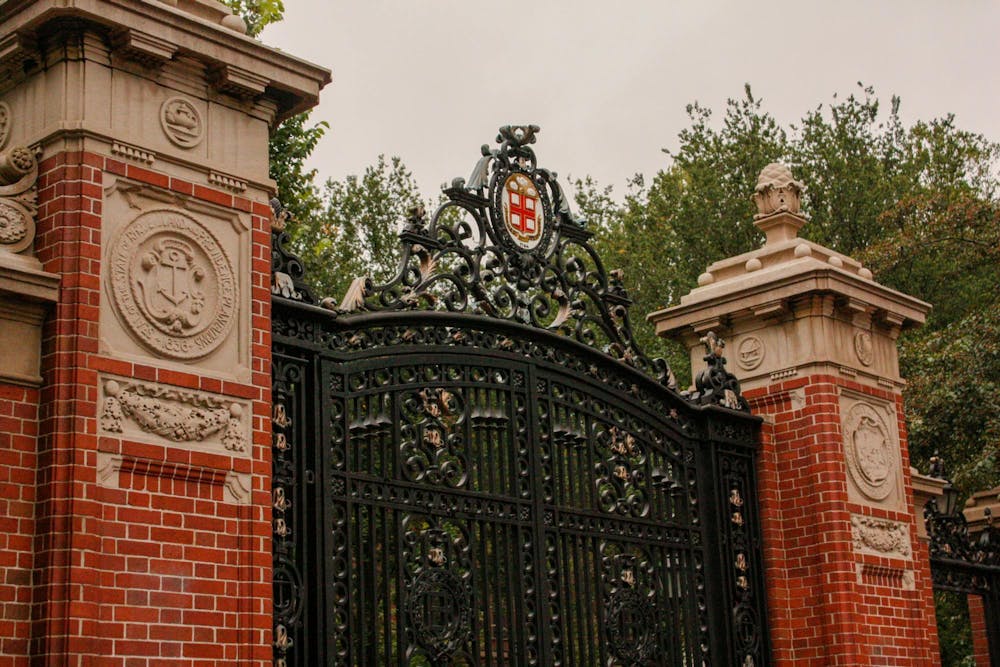Despite efforts to limit the impact of the Supreme Court’s ban on race-based affirmative action, Brown’s class of 2028 has a significant decrease in Black and Hispanic domestic students compared to previous years.
The share of Black students in the freshman class dropped 40%, while that of Hispanic students dropped 29% compared to last year. The share of domestic Asian freshmen increased 14% compared to last year. The number of students who did not report race or ethnicity nearly doubled, from 4% to 7%
The Herald’s first-year poll also outlined early warning signs of marked decreases in the share of Black and Hispanic students and an increase in Asian students. The University only reported the racial demographics of domestic students, not international ones, unlike The Herald’s poll.
Brown is the first Ivy League to report a significant decrease in Hispanic and Black first-year students.
Some schools saw similar decreases in racial diversity, such as MIT and Tufts. But for other peer institutions, diversity increased. Yale saw a record-high 19% share of Hispanic students in its freshman class, while Princeton saw little change in its racial diversity.
In the aftermath of the Supreme Court ruling that restricted traditional race-conscious admission practices, Brown announced several programs to maintain diversity, like building closer relationships with historically Black colleges and universities and community-based organizations.
“Even with a significant number of measures in place to ensure a diverse, talented applicant pool and enrolled class, we recognized the likelihood that declines in the number of students of color at Brown and other selective universities were widely anticipated across the country,” Logan Powell, associate provost for enrollment and dean of admission, said in a press release.
Last fall, in addition to his normal recruitment visits, Powell started traveling with a representative from Howard University, an HBCU, to “attract applicants who may not have considered us in the past, but may now consider us,” Powell previously told The Herald.
In addition to these new programs, Brown’s application featured new short-answer essay questions.
One such question invited applicants to “share how an aspect of your growing up has inspired or challenged you, and what unique contributions this might allow you to make to the Brown community.” While students were not required to discuss their racial background in their answer, they were welcome to do so.
The Supreme Court ruled that students could discuss how race impacted their lives “through discrimination, inspiration, or otherwise.” Chief Justice John Roberts explicitly said that the Court’s ruling should not be “construed as prohibiting universities from considering an applicant’s discussion of how race affected his or her life,” highlighting essays as a space in which applicants could touch on their race.
Several other universities — including Yale and Princeton — also added similar essays that provided students with an opportunity to discuss their backgrounds.
Nick Lee '26, co-president of the campus group Students for Educational Equity, called the numbers "utterly indefensible" and criticized the Supreme Court's decisions. He said the group is now doubling down on advocating to end legacy admissions, which disproportionately favor white applicants.
"Over the next couple of days, you are going to see (Students for Educational Equity) being pissed," he said.
The University also re-implemented a test-required policy in March for the upcoming 2024-25 admissions cycle. “An analysis of the University’s COVID-era test-optional approach suggested that some students from less-advantaged backgrounds chose not to submit scores when doing so could have increased their chance of admission,” Provost Francis Doyle said in an email to the campus community on Friday.
Powell reiterated that Brown will continue to use “race-neutral strategies” in order to admit “increasingly diverse incoming classes.”

Talia LeVine is a section editor covering arts and culture. They study Political Science and Visual Art with a focus on photography. In their free time, they can be found drinking copious amounts of coffee.





